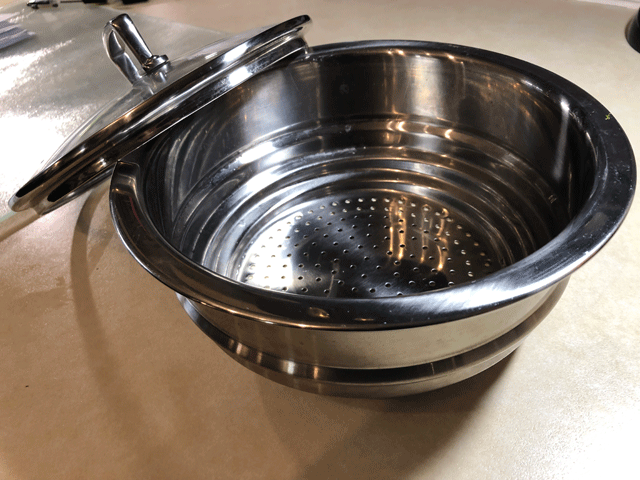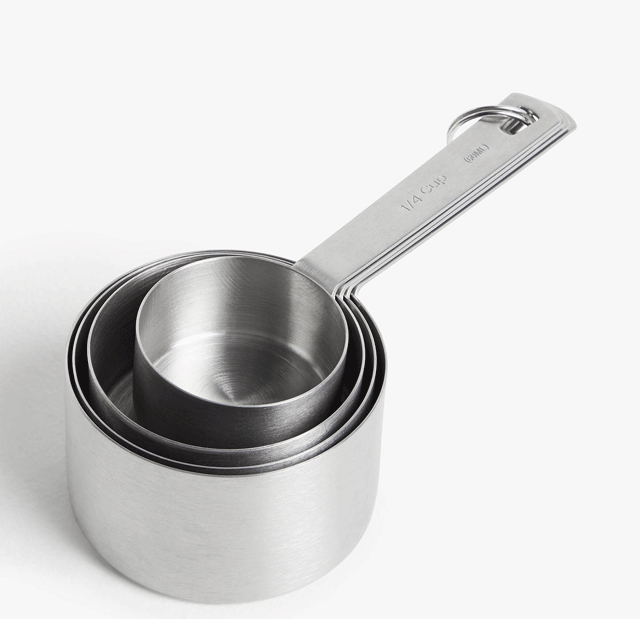When you take your first steps on the low sugar, low starch journey, it can all seem rather daunting. Strange ingredients – often ones that are not readily available in the supermarket – and cooking methods that may be a little different from the norm.
In this introduction I hope to make life a little easier for the start of the journey by offering advice and recommendations.
Where I make suggestions of particular brands or particular stores where items can be sourced, I am doing this purely from personal experience and not because I have any association with or financial gain from these brands.
Equipment
Let’s start with equipment. Actually, for the first few steps of the journey there is probably little that is not already part of your kitchen. The one piece of equipment though that you may need to purchase and I use more than any other is the steamer. I have two.

I have the sort that sits over a saucepan of simmering water. This pretty much sits on my stove all the time and is used for almost every meal as steamed fibrous vegetables make up around two-thirds of my plate.
I also have a plug-in steamer for occasions when I need to prepare bigger quantities of veg or if I am steaming a number of things that perhaps have different cooking times. I use this less often but that is partly because I am most often just preparing food for myself and so the quantities of veg I typically prepare fit into my over-the-saucepan steamer. Cooking for larger families would perhaps make a plug-in steamer more of an essential.
I also have a wok type pan for the rarer times I stir fry my veg. I do not use method as often for no other reason than personal choice. You might find your wok pan your run-to cooking method!
I also have a wide selection of oven-proof dishes for those times I want to roast my veg.
If you choose to try some of the low sugar/starch baking, particularly the cake, pastry or biscuit recipes you will find rolls of parchment very useful. This was not something I used before changing to this way of eating, and so this was an essential early purchase.

A high speed blender, of the NutriBullet or Ninja type, is also a valuable addition to the kitchen. This is useful for smoothies, making bulletproof coffees and also for making ‘flours’ out of nuts and seeds.

I also have a set of measuring cups, simply because many of the recipes from on-line research are derived in the U.S. where this is the standard baking measure. Quick Googling often allows a ready conversion into grams or millilitres but having the measuring cups is often quicker.
I do also have a microwave. This shocks some people as there is very definitely a view by some that microwave ovens are the work of the Devil. I have read many of the studies looking at this and there is no robust evidence that microwave cooking destroys any more of the nutrients than other methods of cooking (I have often heard people say that microwave cooking destroys ALL the nutrients in food. This is hysteria rather than science.) I would choose not to stand over my microwave when it is cooking but occasional use of a microwave probably exposes me to no more microwaves than being near a mobile phone much of the time and being bathed in wifi. I only use my microwave to cook things like the 90 second muffin. In instances such as this, the microwave makes the difference between a homemade treat where I know exactly what has go into it versus a shop-bought cake full of sugar, starch, synthetic oils, preservatives and colourants. The microwave muffin therefore represents the healthier choice.
Ingredients
There are a few store-cupboard ingredients that you might wish to consider adding to your kitchen right from the start:
- Coconut flour – this is a versatile alternative to wheat flower and is readily available in most supermarkets. Amazon offers larger packs and is therefore generally cheaper.
- Ground almonds – these can be bought in most supermarkets but can also be made in a high power blender from almonds. Some recipes I have researched make a distinction between ‘ground almonds’ and ‘almond flour’, the latter being a much finer grind. Occasionally this does seem to make a difference to the texture of the recipe but generally they are interchangeable (as long as you are measuring by weight). Almond flour is available on Amazon. If I make my own, I tend not to bother blanching first (to remove the husks) but if I wanted a lighter flour, I would take the time to do that, or perhaps more likely start with bought blanched almonds.
- Psyllium husk powder – those brands labelled ‘blond’ are less likely to turn purple during baking! I find Amazon is the best source of this. This is a great substitute for gluten in baking.
- Xanthum gum – for thickening meat juices and for baking. Buy from Health food stores or Amazon.
- Coconut oil – a good all round all for baking, roasting, stir frying, making chocolate and adding to bulletproof coffees. If the taste of coconut bothers you, Avocado oil is a good cooking alternative and Ghee is good alternative for the coffees. Cacao butter is a good option for chocolate making.
- Almond butter – a good nut butter for bulletproof coffees and also a versatile ingredient for chocolates, muffins etc.
- Himalayan Salt – a very healthy alternative to table or sea salt. Also good taken as a few crystals on the tip of your tongue a mineral boost.
Fridge Ingredients
There are a few things worth keeping in your fridge too:
- Grated Mozzarella – this is a cunning replacement for gluten when melted as it becomes very stringy allowing a dough ball to be made. Great for making pastry that can be rolled.
